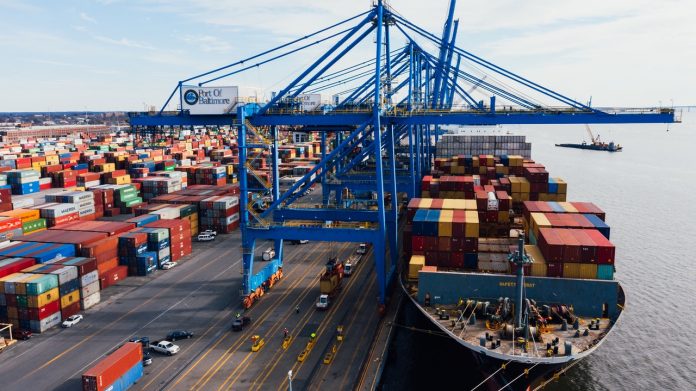
Copper and cobalt, Zambia’s traditional exports, continue to dominate exports since pre independence and accounted for about 75% of all merchandise exports in 2019. The remaining 25% of merchandise exports in that year were comprised of non-traditional exports (NTE’s), of which over 14% emanated from the manufacturing sector.
Manufactured exports have comprised on average 52% of NTE’s between 2006 and 2019. Some of the large manufacturing sector exports with considerable regional market are sugar, cement, copper cables and confectionaries. With the commencement of the Africa Continental Free Trade Area (AfCFTA) in 2021, a bigger market in Africa now exists for export diversification to take root and facilitate exports of various locally manufactured NTE’s.
Lessons can be learnt from South Africa which has an export-oriented manufacturing sector and supplies several Sub-Saharan countries. According to the International Trade Centre (ITC), about 23% of South Africa’s exports were destined for Africa in 2020. On the whole, data from the same source showed that 4% of Africa’s imports originated from South Africa.
Despite South Africa’s manufacturing production decreasing by 3.5% in November 2020 due to the Coronavirus disease 2019 pandemic, compared with the previous period, the country’s reach in Africa was still felt. The largest contributors to South Africa’s manufactured exports were: petroleum products such as lubricants; chemical products; rubber and plastic products; food and beverages; basic iron and steel; non-ferrous metal products; metal products; and machinery.
In the late 1990’s, significance of gold in terms of its contribution to South Africa’s Gross Domestic Product (GDP) and traditional exports hit an extreme decline. The country identified certain non-traditional exports from the manufacturing sector that had the potential to play a huge role to GDP and focused on strengthening these exports. The importance of the manufacturing sector in South Africa, as a supplier for other African countries, is evident twenty years after South Africa embarked on increasing non-traditional exports to sustain their exports.
Back to the local scene, granted the breakdown of Zambia’s current exports, the Zambian manufacturing sector continues to face challenges which have limited the capacity to increase manufactured exports despite the great potential manufactured NTE’s hold.
Firstly, there is lack of capital investment in local value chains to produce intermediate inputs and potentially supply local manufacturers. Lack of capital investment has resulted into fragmented value chains such that local raw materials are usually exported for further processing. The lack of local processing capacity to produce intermediate goods results into huge importations of intermediate inputs made out of the country’s raw materials to the tune of K36.5. Currency depreciation makes the imported input products expensive therefore rendering local manufactured exports uncompetitive in the regional and African markets.
Secondly, micro-medium and small entrepreneurs (MSME’s) face challenges exporting to some regions in Africa due to non-conformity to standards and difficulties with labelling for non-English speaking African countries. Most MSME’s lack R&D investment to ensure that their standards and labelling are top-notch. Further the high subscription costs to compulsory and voluntary standards exacerbate costs for most MSME’s. For those MSMEs that have overcome this barrier, consistency of supply into export markets eludes them and after some time they lose the market developed.
Thirdly, manufacturers have continued to face challenges accessing export markets through some trade corridors due to the dilapidated highway transport infrastructure. Given that Zambia is a landlocked country, accessing other African countries can only be done through road transit methods, via neighbouring countries. Poor road transport infrastructure makes it expensive for a manufacturer to export into Africa due to high cost of repairs from the wear and tear of trucks. The AfCFTA has come at a cardinal time and easing transit hurdles through good road and rail infrastructure is essential to utilise this available market.
Lastly, the existence of non-tariff barriers (NTBs) has continued to limit the exports of some manufactured goods into the region. Manufactured products experience increased NTBs by African countries producing the same goods, therefore making manufactured exports uncompetitive and unmarketable in importing countries.
The manufacturing sector continues to hold potential to grow Zambia’s NTE’s. Thus, making of an export focused manufactured sector requires increased coordination between private sector associations such as the Zambia Association of Manufacturers (ZAM), Government and its aligned ministries and agencies.
The Government needs to ensure that local value chains are developed through facilitation of capital investment, and promotion of R&D through building more research laboratories and industrial research centres. Additionally, the Government must work on key road highway and rail transport infrastructure to ensure smooth transportation to export destinations. Good transport infrastructure in trade corridors will also be cardinal to facilitate exports of manufactured goods in the newly commenced AfCFTA.
Lastly, ZAM will effectively coordinate with Government to ensure that NTB’s impeding manufactured exports are effectively captured, monitored and eliminated as well as help manufacturers adhere to the standards and product certification as well as labelling through various initiatives for exporters including the Proudly Zambian Campaign.


